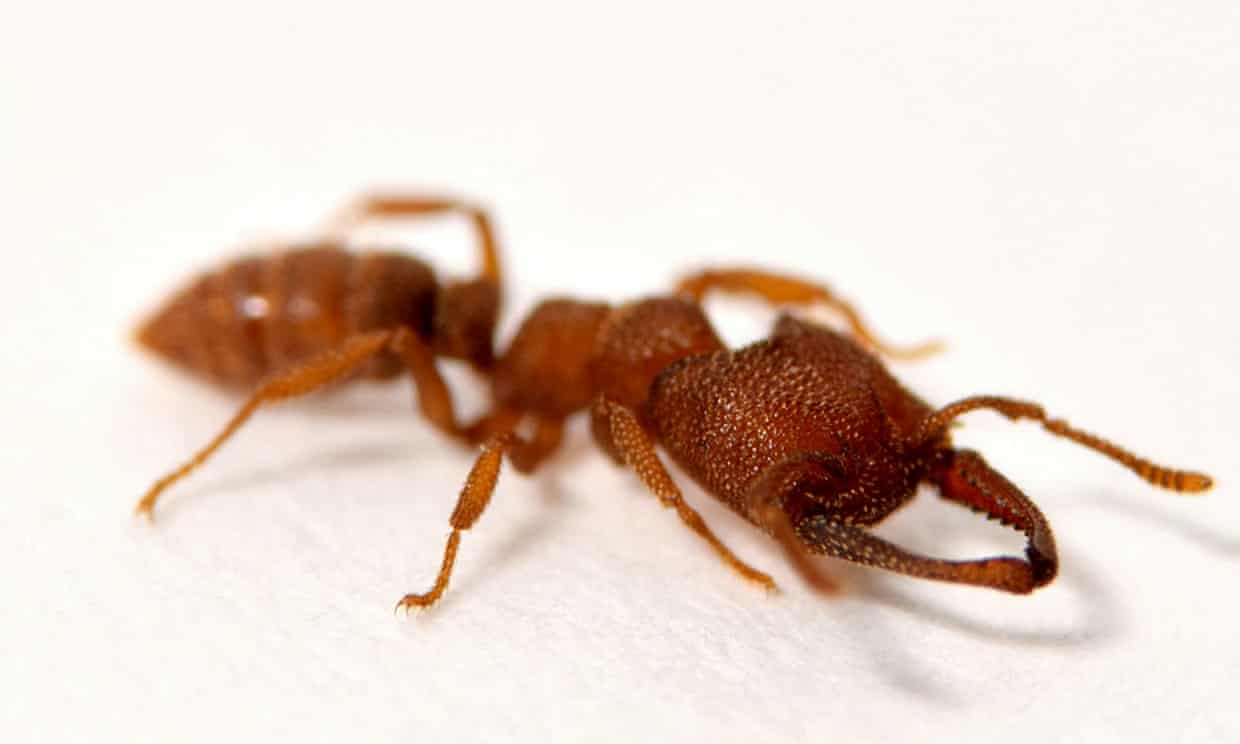Scientists discover the Dracula ant is the world's fastest mover
Insect uses lethal speed of its spring-loaded mandibles to stun or kill prey

A new study of the Dracula ant has found that it is the fastest animal in the world.
According to a new study, the Dracula ant, Mystrium camillae, can snap its mandibles at speeds of up to 90 metres per second (over 200 mph), making it the fastest animal movement on record.

The ants can be found in Australia, tropical Africa and South-East Asia and “use the explosive motion to attack, stun and kill prey, which is then fed to their larvae”, says The Guardian. Scientists were able to understand the exact speed of the snapping motion only with the advent of high-speed video technology over the past 10 years.
The Week
Escape your echo chamber. Get the facts behind the news, plus analysis from multiple perspectives.

Sign up for The Week's Free Newsletters
From our morning news briefing to a weekly Good News Newsletter, get the best of The Week delivered directly to your inbox.
From our morning news briefing to a weekly Good News Newsletter, get the best of The Week delivered directly to your inbox.
“The high accelerations of Mystrium strikes likely result in high-impact forces necessary for predatory or defensive behaviours,” the researchers wrote in a report of their findings in the journal Royal Society Open Science.
Researchers say the tiny blood-sucking creature powers its mandibles by pressing the tips together, spring loading them with internal stresses that release when one mandible slides across the other — similar to a human finger snap.
“The ants use this motion to smack other arthropods, likely stunning them, smashing them against a tunnel wall or pushing them away. The prey is then transported back to the nest, where it is fed to the ants' larvae,” Suarez said.
“Scientists have described many different spring-loading mechanisms in ants, but no one knew the relative speed of each of these mechanisms," Larabee said. "We had to use incredibly fast cameras to see the whole movement. We also used X-ray imaging technology to be able to see their anatomy in three dimensions, to better understand how the movement works”, he added.
A free daily email with the biggest news stories of the day – and the best features from TheWeek.com
This particular species of ant are rarely encountered “as they live in large colonies underground, or inside tree trunks”, says science website Geek.com. Their name wasn’t derived from their snap-jaw, but “from their extremely unusual feeding habits”, the website adds. They practise a sort of “non-destructive cannibalism”, chewing holes into and feeding on the blood of the colony’s own larvae.
-
 Why is Trump’s alleged strike on Venezuela shrouded in so much secrecy?
Why is Trump’s alleged strike on Venezuela shrouded in so much secrecy?TODAY'S BIG QUESTION Trump’s comments have raised more questions than answers about what his administration is doing in the Southern Hemisphere
-
 Vance’s ‘next move will reveal whether the conservative movement can move past Trump’
Vance’s ‘next move will reveal whether the conservative movement can move past Trump’Instant Opinion Opinion, comment and editorials of the day
-
 Why recognizing Somaliland is so risky for Israel
Why recognizing Somaliland is so risky for IsraelTHE EXPLAINER By wading into one of North Africa’s most fraught political schisms, the Netanyahu government risks further international isolation
-
 How Bulgaria’s government fell amid mass protests
How Bulgaria’s government fell amid mass protestsThe Explainer The country’s prime minister resigned as part of the fallout
-
 Femicide: Italy’s newest crime
Femicide: Italy’s newest crimeThe Explainer Landmark law to criminalise murder of a woman as an ‘act of hatred’ or ‘subjugation’ but critics say Italy is still deeply patriarchal
-
 Brazil’s Bolsonaro behind bars after appeals run out
Brazil’s Bolsonaro behind bars after appeals run outSpeed Read He will serve 27 years in prison
-
 Americans traveling abroad face renewed criticism in the Trump era
Americans traveling abroad face renewed criticism in the Trump eraThe Explainer Some of Trump’s behavior has Americans being questioned
-
 Nigeria confused by Trump invasion threat
Nigeria confused by Trump invasion threatSpeed Read Trump has claimed the country is persecuting Christians
-
 Sanae Takaichi: Japan’s Iron Lady set to be the country’s first woman prime minister
Sanae Takaichi: Japan’s Iron Lady set to be the country’s first woman prime ministerIn the Spotlight Takaichi is a member of Japan’s conservative, nationalist Liberal Democratic Party
-
 Russia is ‘helping China’ prepare for an invasion of Taiwan
Russia is ‘helping China’ prepare for an invasion of TaiwanIn the Spotlight Russia is reportedly allowing China access to military training
-
 Interpol arrests hundreds in Africa-wide sextortion crackdown
Interpol arrests hundreds in Africa-wide sextortion crackdownIN THE SPOTLIGHT A series of stings disrupts major cybercrime operations as law enforcement estimates millions in losses from schemes designed to prey on lonely users